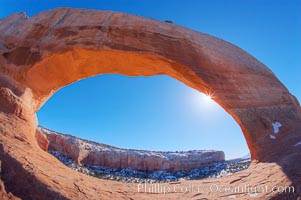
Wilson Arch rises high above route 191 in eastern Utah, with a span of 91 feet and a height of 46 feet.
Location: Wilson Arch, Utah
Image ID: 18034
Location: Wilson Arch, Utah
Image ID: 18034
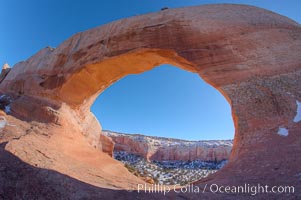
Wilson Arch rises high above route 191 in eastern Utah, with a span of 91 feet and a height of 46 feet.
Location: Wilson Arch, Utah
Image ID: 18035
Location: Wilson Arch, Utah
Image ID: 18035
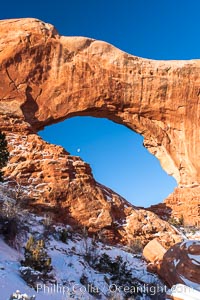
North Window, sunrise, eastern face. North Window is a natural sandstone arch 90 feet wide and 48 feet high.
Location: North Window, Arches National Park, Utah
Image ID: 18161
Location: North Window, Arches National Park, Utah
Image ID: 18161
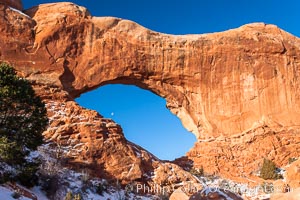
North Window, sunrise, eastern face. North Window is a natural sandstone arch 90 feet wide and 48 feet high.
Location: North Window, Arches National Park, Utah
Image ID: 18162
Location: North Window, Arches National Park, Utah
Image ID: 18162
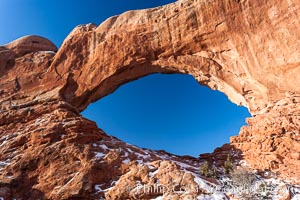
North Window, sunrise, eastern face. North Window is a natural sandstone arch 90 feet wide and 48 feet high.
Location: North Window, Arches National Park, Utah
Image ID: 18166
Location: North Window, Arches National Park, Utah
Image ID: 18166

Panorama of the Minarets at sunrise, near Mammoth Mountain. The Minarets are a series of seventeen jagged peaks in the Ritter Range, west of Mammoth Mountain in the Ansel Adams Wilderness. These basalt peaks were carved by glaciers on both sides of the range. The highest of the Minarets stands 12,281 feet above sea level.
Location: Mammoth Lakes, California
Image ID: 19123
Panorama dimensions: 3233 x 26731
Location: Mammoth Lakes, California
Image ID: 19123
Panorama dimensions: 3233 x 26731
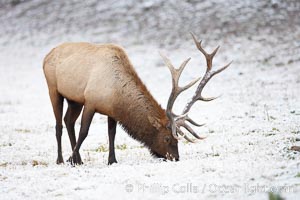
Large male elk (bull) in snow covered meadow near Madison River. Only male elk have antlers, which start growing in the spring and are shed each winter. The largest antlers may be 4 feet long and weigh up to 40 pounds. Antlers are made of bone which can grow up to one inch per day. While growing, the antlers are covered with and protected by a soft layer of highly vascularised skin known as velvet. The velvet is shed in the summer when the antlers have fully developed. Bull elk may have six or more tines on each antler, however the number of tines has little to do with the age or maturity of a particular animal.
Species: Elk, Cervus canadensis
Location: Yellowstone National Park, Wyoming
Image ID: 19734
Species: Elk, Cervus canadensis
Location: Yellowstone National Park, Wyoming
Image ID: 19734
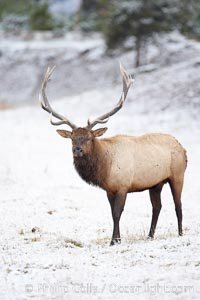
Large male elk (bull) in snow covered meadow near Madison River. Only male elk have antlers, which start growing in the spring and are shed each winter. The largest antlers may be 4 feet long and weigh up to 40 pounds. Antlers are made of bone which can grow up to one inch per day. While growing, the antlers are covered with and protected by a soft layer of highly vascularised skin known as velvet. The velvet is shed in the summer when the antlers have fully developed. Bull elk may have six or more tines on each antler, however the number of tines has little to do with the age or maturity of a particular animal.
Species: Elk, Cervus canadensis
Location: Yellowstone National Park, Wyoming
Image ID: 19751
Species: Elk, Cervus canadensis
Location: Yellowstone National Park, Wyoming
Image ID: 19751
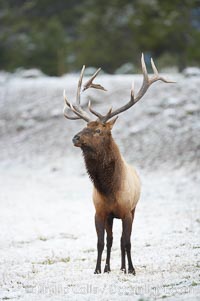
Large male elk (bull) in snow covered meadow near Madison River. Only male elk have antlers, which start growing in the spring and are shed each winter. The largest antlers may be 4 feet long and weigh up to 40 pounds. Antlers are made of bone which can grow up to one inch per day. While growing, the antlers are covered with and protected by a soft layer of highly vascularised skin known as velvet. The velvet is shed in the summer when the antlers have fully developed. Bull elk may have six or more tines on each antler, however the number of tines has little to do with the age or maturity of a particular animal.
Species: Elk, Cervus canadensis
Location: Yellowstone National Park, Wyoming
Image ID: 19778
Species: Elk, Cervus canadensis
Location: Yellowstone National Park, Wyoming
Image ID: 19778
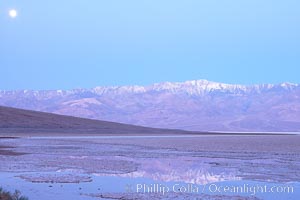
Sunrise lights Telescope Peak as it rises over the salt flats of Badwater, Death Valley. At 11,049 feet, Telescope Peak is the highest peak in the Panamint Range as well as the highest point in Death Valley National Park. At 282 feet below sea level, Badwater is the lowest point in North America.
Location: Badwater, Death Valley National Park, California
Image ID: 20597
Location: Badwater, Death Valley National Park, California
Image ID: 20597
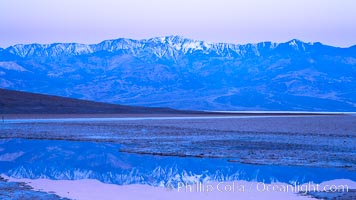
Sunrise lights Telescope Peak as it rises over the salt flats of Badwater, Death Valley. At 11,049 feet, Telescope Peak is the highest peak in the Panamint Range as well as the highest point in Death Valley National Park. At 282 feet below sea level, Badwater is the lowest point in North America.
Location: Badwater, Death Valley National Park, California
Image ID: 20598
Location: Badwater, Death Valley National Park, California
Image ID: 20598
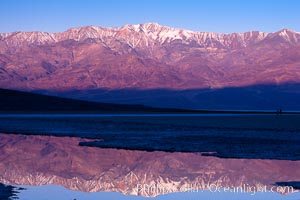
Sunrise lights Telescope Peak as it rises over the salt flats of Badwater, Death Valley. At 11,049 feet, Telescope Peak is the highest peak in the Panamint Range as well as the highest point in Death Valley National Park. At 282 feet below sea level, Badwater is the lowest point in North America.
Location: Badwater, Death Valley National Park, California
Image ID: 20603
Location: Badwater, Death Valley National Park, California
Image ID: 20603
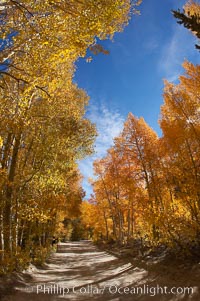
Aspen trees displaying fall colors rise alongside a High Sierra road near North Lake, Bishop Creek Canyon.
Species: Aspen, Populus tremuloides
Location: Bishop Creek Canyon, Sierra Nevada Mountains, California
Image ID: 17588
Species: Aspen, Populus tremuloides
Location: Bishop Creek Canyon, Sierra Nevada Mountains, California
Image ID: 17588
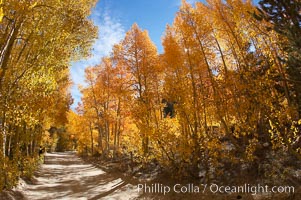
Aspen trees displaying fall colors rise alongside a High Sierra road near North Lake, Bishop Creek Canyon.
Species: Aspen, Populus tremuloides
Location: Bishop Creek Canyon, Sierra Nevada Mountains, California
Image ID: 17598
Species: Aspen, Populus tremuloides
Location: Bishop Creek Canyon, Sierra Nevada Mountains, California
Image ID: 17598
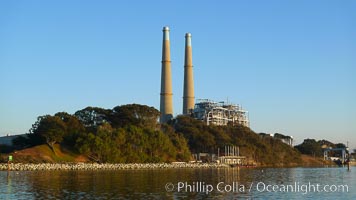
Moss Landing Power Plant rise above Moss Landing harbor and Elkhorn Slough. The Moss Landing Power Plant is an electricity generation plant at Moss Landing, California. The twin stacks, each 500 feet high, mark two generation units product 750 megawatts each.
Location: Moss Landing, California
Image ID: 21496
Location: Moss Landing, California
Image ID: 21496
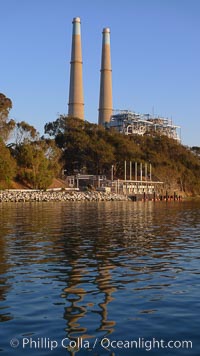
Moss Landing Power Plant rise above Moss Landing harbor and Elkhorn Slough. The Moss Landing Power Plant is an electricity generation plant at Moss Landing, California. The twin stacks, each 500 feet high, mark two generation units product 750 megawatts each.
Location: Moss Landing, California
Image ID: 21497
Location: Moss Landing, California
Image ID: 21497
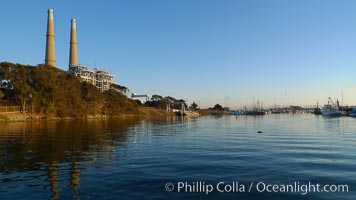
Moss Landing Power Plant rise above Moss Landing harbor and Elkhorn Slough. The Moss Landing Power Plant is an electricity generation plant at Moss Landing, California. The twin stacks, each 500 feet high, mark two generation units product 750 megawatts each.
Location: Moss Landing, California
Image ID: 21499
Location: Moss Landing, California
Image ID: 21499
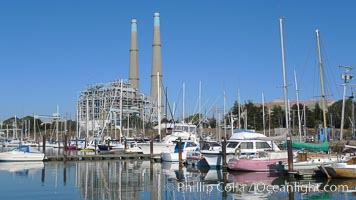
Moss Landing Power Plant rise above Moss Landing harbor and Elkhorn Slough. The Moss Landing Power Plant is an electricity generation plant at Moss Landing, California. The twin stacks, each 500 feet high, mark two generation units product 750 megawatts each.
Image ID: 21505
Image ID: 21505
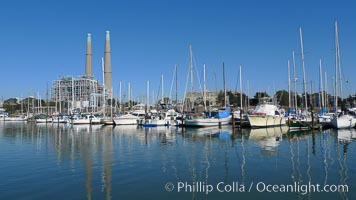
Moss Landing Power Plant rise above Moss Landing harbor and Elkhorn Slough. The Moss Landing Power Plant is an electricity generation plant at Moss Landing, California. The twin stacks, each 500 feet high, mark two generation units product 750 megawatts each.
Image ID: 21506
Image ID: 21506
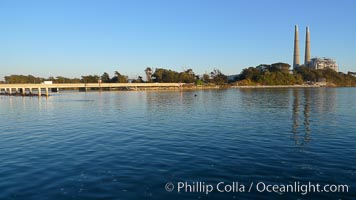
Moss Landing Power Plant rise above Moss Landing harbor and Elkhorn Slough. The Moss Landing Power Plant is an electricity generation plant at Moss Landing, California. The twin stacks, each 500 feet high, mark two generation units product 750 megawatts each.
Image ID: 21507
Image ID: 21507
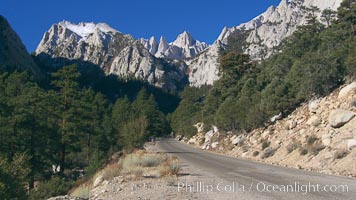
Mount Whitney rises above the Whitney Portal Road which leads to the trailhead from which Mt. Whitney is usually approached by climbers. Mt. Whitney is the highest point in the contiguous United States with an elevation of 14,505 feet (4,421 m). It lies along the crest of the Sierra Nevada mountain range. Composed of the Sierra Nevada batholith granite formation, its eastern side (seen here) is quite steep. It is climbed by hundreds of hikers each year.
Location: California
Image ID: 21762
Location: California
Image ID: 21762
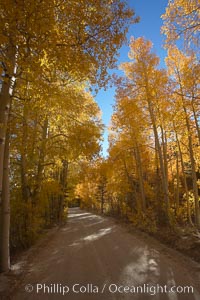
Aspen trees displaying fall colors rise alongside a High Sierra road near North Lake, Bishop Creek Canyon.
Species: Aspen, Populus tremuloides
Location: Bishop Creek Canyon, Sierra Nevada Mountains, California
Image ID: 17554
Species: Aspen, Populus tremuloides
Location: Bishop Creek Canyon, Sierra Nevada Mountains, California
Image ID: 17554
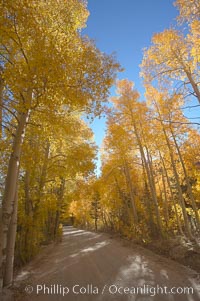
Aspen trees displaying fall colors rise alongside a High Sierra road near North Lake, Bishop Creek Canyon.
Species: Aspen, Populus tremuloides
Location: Bishop Creek Canyon, Sierra Nevada Mountains, California
Image ID: 17581
Species: Aspen, Populus tremuloides
Location: Bishop Creek Canyon, Sierra Nevada Mountains, California
Image ID: 17581